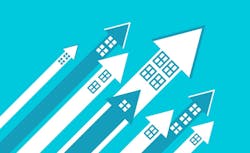Sustainably Increasing the Homeownership Rate May Be More Difficult Than Ever Post-Pandemic
Though public policy in housing has long held an objective to increase the U.S. homeownership rate, the current share of homeowners rests around 65%, the same level reached half a century ago in the late 1960s, according to Harvard University’s Joint Center for Housing Studies. The post-pandemic housing fallout has only made the nationwide push for homeownership more difficult as record-breaking price increases threaten to lower the homeownership rate for the first time in over 50 years.
If housing policy can actively combat a price-driven decline over the next few years, the homeownership rate will remain around 65% and could potentially rise in the longer term.
The unprecedented housing price increase will presumably press down hard on the homeownership rate, and we might see it for the first time since the 1960s shift materially away from 65 percent – but, sadly and unexpectedly, in the form of a decline rather than an increase.
In other words, the challenge of raising the homeownership rate – already very difficult given its 130-year history – just got even harder. Realistically, the first priority of the program described herein will be to help counter a likely price-driven decline in the rate over the next few years.
